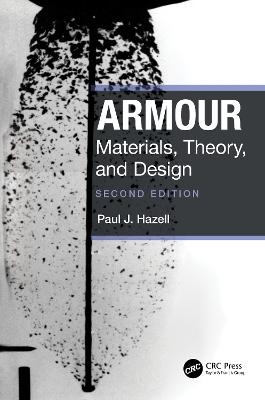
Armour
CRC Press (Verlag)
978-0-367-41971-4 (ISBN)
Introducing a wide range of armour technologies, the book is a key guide to the technology used to protect against both blasts and ballistic attacks. Chapters cover bullets, blasts, jets and fragments, as well as penetration mechanics. The new edition builds on the previous one, discussing ceramics and metallic materials as well as woven fabrics and composite laminates. Detailing modern technology advancements, the second edition has also been expanded to include improved explanations on shock mechanisms and includes significantly more figures and diagrams.
An essential guide to armour technology, this book outlines key ways to implement protective strategies applicable for many types of conflict.
Paul J. Hazell is a professor of impact dynamics at UNSW Canberra. His main research interests are in the subjects of shock loading, penetration mechanics and lightweight armour optimization. He also teaches several courses related to terminal ballistics and armour design to undergraduate and postgraduate students at the Australian Defence Force Academy in Canberra. Paul graduated from the University of Leeds in 1992 with a BEng (Hons) degree in mechanical engineering, and after a couple of years in the automotive industry, he pursued his doctoral studies at the Shrivenham campus of Cranfield University (at the Royal Military College of Science). He was subsequently taken onto the faculty to teach terminal ballistics – to a student cohort that mostly consisted of British Army Officers. He has been in the business of teaching the uniformed services ever since.
1. Introduction 2. An Introduction to Materials 3. Bullets, Blast, Jets and Fragments 4. Penetration Mechanics 5. Stress Waves 6. Computational Methods for Armour Design 7. Metallic Armour Materials and Structures 8. Ceramic Armour 9. Woven Fabrics and Composite Laminates for Armour Applications 10. Reactive Armour Systems 11. Human Vulnerability 12. Blast and Ballistic Testing Techniques
| Erscheinungsdatum | 01.09.2022 |
|---|---|
| Zusatzinfo | 87 Tables, black and white; 216 Line drawings, black and white; 32 Halftones, black and white; 248 Illustrations, black and white |
| Verlagsort | London |
| Sprache | englisch |
| Maße | 156 x 234 mm |
| Gewicht | 453 g |
| Themenwelt | Naturwissenschaften ► Chemie ► Organische Chemie |
| Naturwissenschaften ► Chemie ► Technische Chemie | |
| Technik ► Umwelttechnik / Biotechnologie | |
| ISBN-10 | 0-367-41971-8 / 0367419718 |
| ISBN-13 | 978-0-367-41971-4 / 9780367419714 |
| Zustand | Neuware |
| Informationen gemäß Produktsicherheitsverordnung (GPSR) | |
| Haben Sie eine Frage zum Produkt? |
aus dem Bereich


